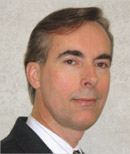From the Editor
Gerard Kugel
Dear Readers:
As we begin 2007 with hopes for success, good health, and prosperity for ourselves and those we hold dear, it’s also time to take inventory of our professional priorities and actions. We must ask if we are doing all we can to ensure that our patients will be around long enough in the future to take stock of their own aspirations and accomplishments.
In perhaps our most important issue ever, Inside Dentistry examines the alarming statistics characterizing oral cancer and the startling realities that have allowed those numbers to remain basically unchanged for several decades. As a profession, we need to reevaluate how we approach oral cancer screening in our practices. If we become more vigilant, we can make a difference both individually and collectively.
Dealing with Deadly Disease Comes with the Territory. It is a fact that we can sometimes be holding the balance of a dental patient’s life in our hands. Dentists are, after all, members of the health care profession. However, some of us are so focused on fixing teeth that we forget that cancer and death are supposed to be among the inventory of patient problems we have to deal with. Anything to do with the well-being of our patients that is even remotely associated with the oral environment falls under our purview. Oral cancer lies within this domain.
Screen Today. Save Tomorrow. Quite frankly, what we begin to do today will have an impact on the number of deaths attributed to oral cancer that will occur within the next 5 years. I’m not exaggerating. As our cover story explains, more than 30,000 new cases of oral cancer will be diagnosed this year, and approximately two thirds of those diagnoses will be late-stage cancers—the kinds that are almost always too far gone. That means that in 5 years, about 50% of the people who were diagnosed this year will be dead. A blunt statement, I know, but these are the facts. My frustration is that oral cancer is a cancer that responds well to early detection and treatment. If we and our staffs start diligently performing a thorough oral cancer examination on all of our adult patients now—so that anything suspicious can be investigated at the earliest possible moment—we can change those statistics and start saving lives.
If You Don’t Know, Get Smart. It’s true that we don’t know what we don’t know. In the case of oral cancer, if it’s time for a continuing education course, then take it. If you need to brush up on what the literature is saying about the risk factors for oral cancer, then read it. If you’re not sure you remember how to perform an oral cancer screening examination, then find out and practice. We have an obligation to detect suspicious oral lesions and/or subsequently diagnose oral precancers or cancers. How competently and frequently we undertake these endeavors is paramount to saving our patients’ lives.
On behalf of the staff and publishers of Inside Dentistry, I wish you much success and prosperity in the coming year. We thank you for your continued readership and constructive commentary regarding our coverage of topics such as oral cancer and how our profession is responding to the challenges associated with it.
With warm regards,

Associate Dean for Research
Tufts University School of Dental Medicine
gkugel@aegiscomm.com
Please continue to share your thoughts and ideas with us by writing to letters@insidedentistry.net. Remember, your supportive feedback is our motivation to continue pursuing thought-provoking issues and deliver clear, objective, and relevant clinical content and editorial coverage. And, to ensure that you continue to receive everything that Inside Dentistry has to offer, please sign up for your free subscription by visiting www.insidedentistry.net or by mailing in the business reply card found on page 16 in this issue.



